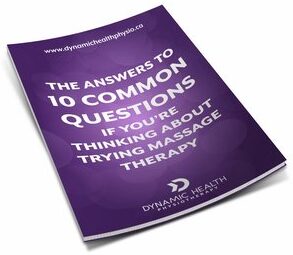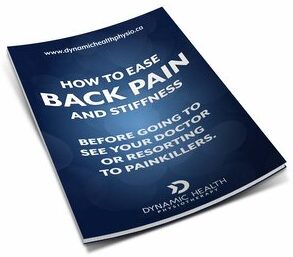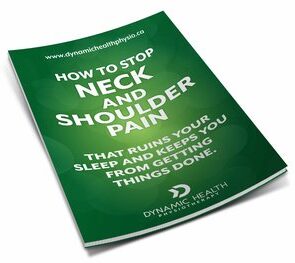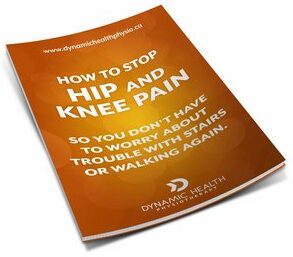- April 2, 2023
HOW TO EASE KNEE PAIN NATURALLY, BEFORE NEEDING SURGERY OR INJECTIONS
How To Ease Knee Pain Naturally, Before Needing Surgery or Injections
If you’re experiencing hip pain, you might be asking yourself if it’s better to rest and avoid any physical activity or is better to exercise, stretch and keep active. In today’s article we’ll discuss how, in many cases, exercise can actually be the best medicine. We’ll discuss the benefits of exercising with hip pain, provide some tips on how to do it safely, and clarify when it’s better to wait and rest with hip pain.

While some severe knee injuries DO require more significant interventions, like knee surgery or injections, the good news is that there are plenty of natural ways to promote healing and relieve pain without resorting to long-term medications or surgeries.
As with any pain, the first step is to make sure to find out what is actually causing your knee pain. Once you know the underlying cause of the injury, you can more precisely treat the problem. This shortens the time it takes to decrease your symptoms and reduces the chances of a flare-up later on. Make sure to talk to your doctor or physiotherapist and get that accurate diagnosis right away.
“There are many natural ways to promote knee healing and reduce knee pain and stiffness."
Once you know what is causing your knee pain, you have several non-invasive, natural methods available to you so you can get started treating your knee.
Here are some options that you can try at home or with the help of your physiotherapist:
HEAT AND ICE THERAPY:
Heat and ice therapy can be used to reduce knee pain and inflammation, often in conjunction with other treatment. Applying a cold compress to the knee can help reduce inflammation and swelling, while heat therapy can help improve blood flow and reduce stiffness. Your physiotherapist can guide you on how to use heat and ice therapy effectively to manage your specific knee pain.
RANGE OF MOTION EXERCISES:
Range of motion exercises are also beneficial for healing and managing knee pain. These exercises help improve flexibility and mobility, allowing you to move more freely without stiffness or pain. Examples include knee bends (quadriceps stretches), heel slides (knee mobility), and knee extensions (hamstrings stretches).
STRENGTHENING EXERCISES:
Strengthening exercises can help reduce pain, add joint support, and improve knee function. Exercises like leg lifts, squats, and lunges can help strengthen the muscles surrounding the knee. Consult with your physiotherapist to ensure you are performing the right exercises for your specific condition.
LOW-IMPACT ACTIVITIES:
Engage in low-impact activities that do not strain the knee, such as swimming or cycling. These activities can help maintain fitness and promote healing while avoiding further injury.
PRACTICE YOGA:
Yoga can help improve flexibility and strength in your knees. Focus on poses that stretch the hamstrings, quadriceps, and hips. If you’re feeling intimidated by the possibility of starting a yoga practice, yoga poses can usually be modified to adjust for limitations due to knee pain or stiffness to help you get started.
PROPER FOOTWEAR SELECTION:
Proper footwear is often not considered as a possible solution to knee pain, but appropriate footwear or custom insoles can help to reduce knee pain naturally by improving alignment, providing shock absorption, supporting the arches, and promoting stability. If you are experiencing knee pain, it is worth investing in a good pair of shoes and/or insoles that provide these benefits.
ACUPUNCTURE:
Acupuncture is a form of traditional Chinese medicine that involves the insertion of very fine, sterile needles into specific points on the body, which stimulates the body’s natural healing response. It has been shown to be effective in reducing knee pain and improving knee function.
MASSAGE:
Massage therapy can be helpful in promoting healing and reducing pain. By increasing blood flow and promoting relaxation, massage therapy can help relieve muscle tension and reduce inflammation.
PHYSIOTHERAPY:
Physiotherapists can use all of the tools and techniques listed above to naturally treat knee pain before it becomes an issue that requires a visit to the knee surgeon.
There are many natural ways to promote knee healing and reduce knee pain and stiffness. Exercise and stretching, proper footwear, massage and physiotherapy, heat and ice therapy, low impact activity and yoga, and acupuncture are all effective ways to reduce knee pain naturally. While all the possibilities can seem daunting, it’s also encouraging that there’s lots you can do to reduce knee pain, resolve the injury fully, and keep the problem from coming back later!
If you are experiencing knee pain, it is important to speak to your physiotherapist to find out which natural remedy is best for you.
We have free physiotherapy discovery visits, where you can speak to a member of our team, ask any questions that you have, and find out what’s stopping you from finally getting some relief.
We can also help you understand how to get your knee and lower body stronger and healthier than ever, so you are able to make the most of your day, stay active with friends and family rather than feeling stiff and sore, and even sleep better once the pain or stiffness in your knee isn’t waking you up in the night anymore.
Alternatively, you can always call us at 506-404-1565 if you prefer to talk over the telephone.

Have Questions About Massage Therapy

Need some help with your back pain?

Struggling with neck or shoulder pain?
Click the button below to claim your free copy of this neck and shoulder pain tips report!

